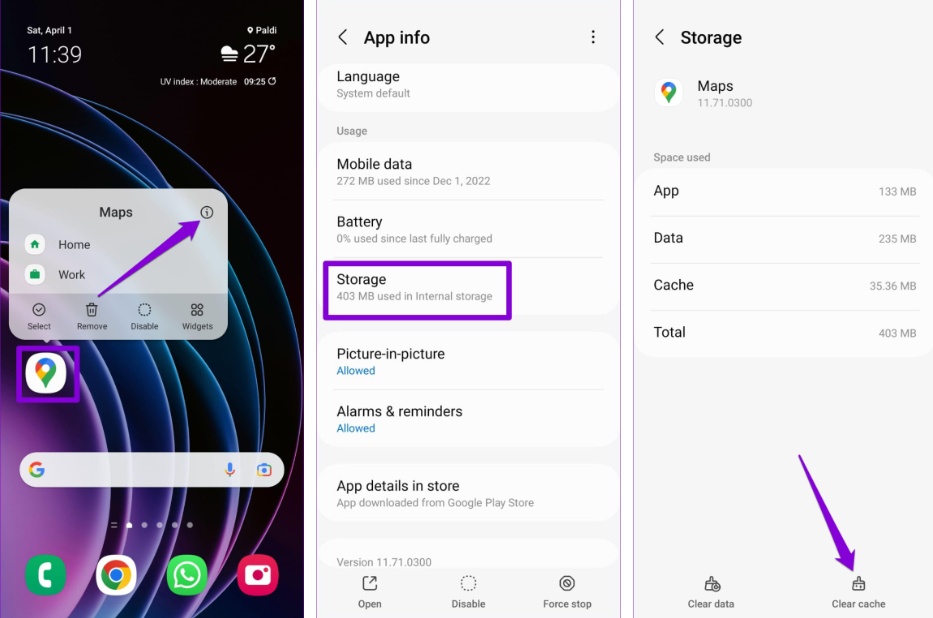Google Maps is a powerful tool that helps users navigate, explore, and make informed decisions about their travels. One of its most valuable features is real-time traffic information, which helps users avoid congestion and choose the best routes. However, there may be times when Google Maps fails to display traffic information on your Android or iPhone device. If you’re experiencing this issue, don’t worry—there are several potential fixes you can try. This article provides a comprehensive guide to resolving the problem of Google Maps not showing traffic on both Android and iPhone devices.
Check Your Internet Connection
A stable internet connection is essential for Google Maps to function correctly, especially when it comes to updating real-time traffic information. If your internet connection is weak or intermittent, Google Maps may not be able to retrieve and display traffic data.
How to Check Your Internet Connection on Android
- Check Wi-Fi Connection:
- Swipe down from the top of your screen to access the notification panel.
- Ensure that Wi-Fi is enabled and connected to a network.
- If necessary, tap the Wi-Fi icon to toggle it off and on again.
- Check Mobile Data:
- Go to Settings > Network & Internet > Mobile Network.
- Ensure that mobile data is turned on.
- You can also try toggling mobile data off and on.
- Run a Speed Test:
- Use a speed test app or website to check the speed and stability of your internet connection.
How to Check Your Internet Connection on iPhone
- Check Wi-Fi Connection:
- Open Settings > Wi-Fi.
- Ensure that Wi-Fi is turned on and connected to a network.
- Tap the network name to reconnect if necessary.
- Check Cellular Data:
- Open Settings > Cellular.
- Ensure that Cellular Data is enabled.
- You can also try toggling Cellular Data off and on.
- Run a Speed Test:
- Use a speed test app or website to verify the quality of your internet connection.
If your internet connection is unstable, try moving to a location with better coverage or contact your service provider for assistance. Once you have a stable connection, check Google Maps again to see if traffic information is now displayed.
Update Google Maps
Outdated versions of Google Maps may have bugs or issues that prevent the app from showing traffic data. Keeping your app updated ensures that you have the latest features and fixes.
How to Update Google Maps on Android
- Open the Google Play Store:
- Launch the Google Play Store app on your device.
- Search for Google Maps:
- Type “Google Maps” into the search bar and select the app from the search results.
- Update the App:
- If an update is available, you will see an Update button. Tap it to download and install the latest version of Google Maps.
- Restart Google Maps:
- Once the update is complete, open Google Maps and check if traffic information is now visible.
How to Update Google Maps on iPhone
- Open the App Store:
- Launch the App Store app on your iPhone.
- Search for Google Maps:
- Tap the Search tab at the bottom of the screen and type “Google Maps” into the search bar.
- Update the App:
- If an update is available, you will see an Update button next to Google Maps. Tap it to install the latest version.
- Restart Google Maps:
- After the update is installed, open Google Maps to verify if traffic data is now being displayed.
Updating Google Maps can resolve compatibility issues and bugs that may be preventing traffic information from showing. If the problem persists after updating, proceed to the next fix.
Enable Traffic Layer
Google Maps allows users to toggle various layers, including the traffic layer, which displays real-time traffic conditions. If the traffic layer is turned off, you won’t see traffic information on the map.
How to Enable Traffic Layer on Android
- Open Google Maps:
- Launch the Google Maps app on your Android device.
- Access Map Layers:
- Tap the Layers icon in the upper-right corner of the screen. It looks like a stacked square icon.
- Enable Traffic Layer:
- In the Layers menu, tap Traffic. Ensure that the traffic layer is enabled by checking the box next to Traffic.
- Check Traffic Information:
- Zoom in and out on the map to see if traffic data is now visible.
How to Enable Traffic Layer on iPhone
- Open Google Maps:
- Launch the Google Maps app on your iPhone.
- Access Map Layers:
- Tap the Layers icon in the upper-right corner of the screen.
- Enable Traffic Layer:
- Tap Traffic to enable the traffic layer. Ensure the option is selected.
- Check Traffic Information:
- Adjust the zoom level to see if traffic information is now displayed.
Enabling the traffic layer ensures that Google Maps displays real-time traffic conditions. If you still don’t see traffic information after enabling the layer, proceed to the next troubleshooting step.
Clear Cache and Data
Cached data can sometimes cause issues with app performance, including problems with displaying real-time information. Clearing the cache and data for Google Maps can resolve these issues.
How to Clear Cache and Data on Android
- Open Settings:
- Go to Settings on your Android device.
- Access App Info:
- Navigate to Apps or Applications and find Google Maps in the list.
- Clear Cache:
- Tap Storage and then select Clear Cache. This will remove temporary files that may be causing issues.
- Clear Data:
- Tap Clear Data or Clear Storage. Note that clearing data will reset the app to its default settings, and you may need to sign in again.
- Restart Google Maps:
- Open Google Maps and check if traffic information is now visible.
How to Clear Cache and Data on iPhone
- Open Settings:
- Go to Settings on your iPhone.
- Access Storage:
- Tap General > iPhone Storage.
- Find Google Maps:
- Scroll down and select Google Maps from the list of apps.
- Offload App:
- Tap Offload App to remove the app but keep its documents and data. Then, reinstall the app from the App Store.
- Check Traffic Information:
- Open Google Maps after reinstalling and see if the traffic information is displayed.
Clearing cache and data can resolve conflicts and issues caused by corrupted files. If traffic information still does not show up, proceed to the final fix.
Reinstall Google Maps
If none of the previous fixes resolve the issue, reinstalling Google Maps may help. Reinstalling the app removes any corrupted files and settings that could be causing the problem.
How to Reinstall Google Maps on Android
- Uninstall Google Maps:
- Go to Settings > Apps > Google Maps.
- Tap Uninstall to remove the app from your device.
- Reinstall Google Maps:
- Open the Google Play Store and search for Google Maps.
- Tap Install to download and install the app.
- Set Up Google Maps:
- Open Google Maps and sign in with your Google account.
- Verify if traffic information is now visible.
How to Reinstall Google Maps on iPhone
- Uninstall Google Maps:
- Press and hold the Google Maps app icon on your home screen.
- Tap the Remove App option and confirm by selecting Delete App.
- Reinstall Google Maps:
- Open the App Store and search for Google Maps.
- Tap Get to download and install the app.
- Set Up Google Maps:
- Open Google Maps and sign in with your Google account.
- Check if the traffic information is now being displayed.
Reinstalling Google Maps ensures that you have a fresh installation with the latest updates and fixes. If the issue persists even after reinstalling, it may be worth checking if there are any known outages or issues with Google Maps services.
Conclusion
Google Maps is a valuable tool for navigating and managing your travel plans. When it fails to show traffic information, it can disrupt your travel experience. By following the steps outlined in this article, you can troubleshoot and resolve issues related to Google Maps not displaying traffic data on both Android and iPhone devices. Whether the problem lies with your internet connection, app updates, traffic layer settings, cached data, or the app itself, these fixes should help you restore the functionality of Google Maps and get accurate traffic information for your journeys.
If you continue to experience issues, consider reaching out to Google Support for further assistance.


